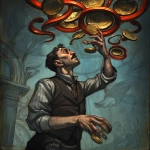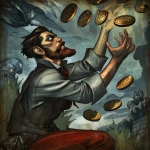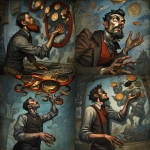Explore the Best AI Image Gallery

Redefining Creation: How SaaS Solutions are Transforming the Creative Industry
The creative landscape is undergoing a seismic shift, driven by the rapid evolution of technology. At the forefront of this transformation lies Software as a Service (SaaS), a cloud-based delivery model revolutionizing how creatives work, collaborate, and bring their visions to life. From graphic design to music production, animation to video editing, SaaS solutions are empowering individuals and businesses alike with accessible, powerful tools that were once confined to expensive, specialized hardware.
Empowering Creativity Through Accessibility
One of the most profound impacts of SaaS on the creative industry is its democratization. Traditional software often came at a hefty price tag, creating a barrier for aspiring creatives and smaller studios. SaaS solutions, with their subscription-based models, make powerful tools readily available to a wider audience. This accessibility fosters innovation by enabling more individuals to experiment, explore, and contribute to the ever-evolving creative sphere.
A Universe of Creative Applications
The applications of SaaS in the creative industry are vast and diverse:
- Graphic Design: Cloud-based design platforms like Canva and Adobe Creative Cloud offer intuitive interfaces and a plethora of templates, fonts, and images, empowering individuals to create stunning visual content for websites, social media, marketing materials, and more.
- Music Production: SaaS solutions like LANDR and Splice provide digital audio workstations (DAWs) and sample libraries accessible from any device with an internet connection. This allows musicians to compose, record, mix, and master their music effortlessly, breaking down geographical barriers and fostering global collaboration.
- Video Editing: Platforms like Vimeo Create and Filmora offer user-friendly video editing tools that simplify the process of creating professional-quality videos for various purposes, from marketing campaigns to educational content and personal storytelling.
- Animation and 3D Modeling: SaaS solutions such as Blender and Sketchfab provide powerful animation and 3D modeling tools accessible in the cloud. This enables animators, game developers, and designers to create immersive experiences and bring their imaginative concepts to life.
Ethical Considerations in a Cloud-Based Creative World
As with any technological advancement, the rise of SaaS in the creative industry presents ethical considerations that require careful attention:
- Data Privacy and Security: The storage and processing of sensitive creative data in the cloud raise concerns about privacy and security. Its crucial for SaaS providers to implement robust measures to protect user data from unauthorized access, breaches, and misuse.
- Copyright and Intellectual Property: The ease of sharing and collaborating on creative projects through SaaS platforms necessitates clear guidelines and policies regarding copyright ownership and intellectual property rights.
- Algorithmic Bias: AI-powered tools integrated into SaaS solutions can perpetuate existing biases, potentially leading to unfair or discriminatory outcomes in creative outputs. Its essential to ensure algorithmic transparency and fairness to mitigate these risks.
The Future of Creativity: A Seamlessly Connected Landscape
Looking ahead, the future of creativity promises even greater integration between SaaS solutions and emerging technologies:
- Augmented Reality (AR) and Virtual Reality (VR): SaaS platforms will increasingly incorporate AR/VR capabilities, allowing creatives to design immersive experiences, visualize concepts in 3D, and collaborate remotely in virtual spaces.
- Artificial Intelligence (AI) Collaboration: AI-powered tools will become more sophisticated, assisting creatives with tasks such as generating ideas, automating workflows, and personalizing creative outputs. This collaboration between humans and AI has the potential to unlock new levels of creativity and innovation.
- Blockchain Integration:** Blockchain technology can revolutionize the way creative works are owned, licensed, and monetized. SaaS platforms could integrate blockchain features to ensure secure transactions, protect intellectual property rights, and empower creators with greater control over their work.
SaaS is not merely a technological shift; its a paradigm shift in how we approach creativity. By democratizing access, fostering collaboration, and empowering individuals with innovative tools, SaaS is redefining the creative landscape, paving the way for a future where imagination knows no bounds.
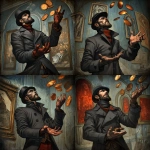


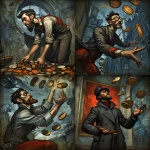
](https://images.ai-img.art/thumbnails/150/1d7b3a908141474d50d90721c394db29c0cb5404d685ae70ea60430c18e905b7.webp)
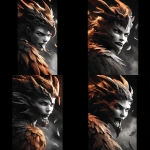
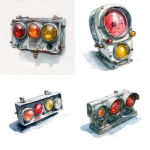



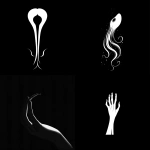
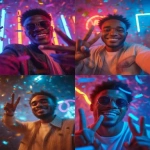

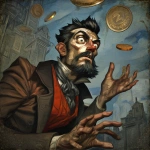
](https://images.ai-img.art/thumbnails/150/1accb5453f2335686b162f0a879c7ce73a18516a33868f214a16bdaf95beeb5a.webp)
](https://images.ai-img.art/thumbnails/150/3c5dc62bba83cc9919c20ebfec8430d31e821cef586a2753dd85ef26d77d480a.webp)
](https://images.ai-img.art/thumbnails/150/8c320ce9aefbbb5b9ec5fd4e1d0fba7388f0fff5b6c2e2f14077cad3008f291d.webp)
](https://images.ai-img.art/thumbnails/150/3e8c063b4357fc743a3c6e49a3145ee31b2dcecc018c38d2db8f97bf3e3fda3f.webp)
